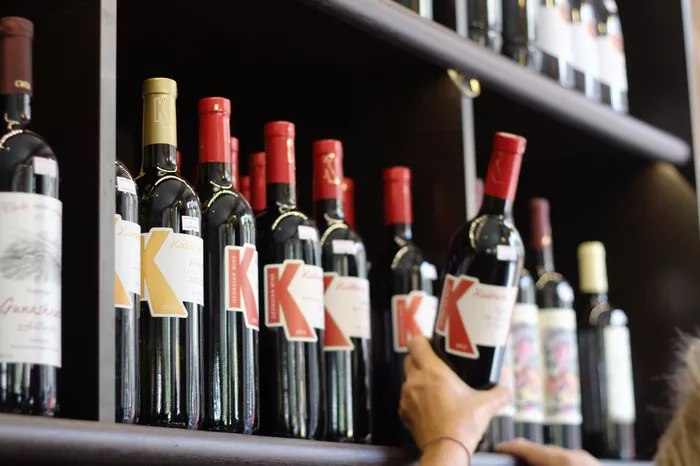The world of wine is a fascinating realm, filled with diverse varietals, production methods, and styles. Merlot, a red wine grape variety, often finds itself under scrutiny when it comes to classifications and misconceptions. One such misconception revolves around whether Merlot is a fortified wine. To clarify this matter, it’s imperative to delve into the characteristics of Merlot, understand the process of fortification, and explore the distinct qualities that differentiate fortified wines from others.
Understanding Merlot: A Noble Grape
Merlot, considered one of the primary grape varieties in Bordeaux blends, has gained global recognition for its plush texture, approachable nature, and rich fruit flavors. Its origins trace back to the Bordeaux region of France, where it is frequently blended with other varietals like Cabernet Sauvignon and Cabernet Franc. However, Merlot also thrives as a standalone varietal, showcasing its versatility and complexity.
Contrary to the belief that Merlot might fall into the category of fortified wines, it’s crucial to note that Merlot is primarily a dry red wine known for its softness, medium body, and diverse flavor profiles. Its distinction lies in being a still wine, typically not subjected to the fortification process that characterizes ports, sherries, and other fortified wines.
Defining Fortified Wines and Their Production
To accurately discern whether Merlot belongs to the category of fortified wines, it’s essential to understand what constitutes this specific classification. Fortified wines are those that undergo the addition of a distilled spirit, often brandy, during the winemaking process. This addition serves to increase the alcohol content and stabilize the wine, preserving its sweetness and flavors.
Ports, sherries, and Madeiras are among the most renowned examples of fortified wines. In the case of Port wine, for instance, the addition of grape spirits or brandy halts fermentation, leaving behind residual sugars and boosting the alcohol content. This process results in a fortified wine that boasts a wide spectrum of sweetness levels and flavor profiles.
Merlot’s Production and Characteristics
The production of Merlot typically involves a more straightforward winemaking process. The grapes undergo crushing and fermentation, where the sugars in the grapes convert to alcohol. Following fermentation, the wine might be aged in oak barrels to enhance its flavors and textures. However, at no point in this process is brandy or any distilled spirit added to fortify the wine.
Merlot wines are appreciated for their smooth tannins, ripe fruit flavors, and moderate acidity. They often exhibit notes of plum, cherry, and herbal nuances, depending on the region of cultivation and winemaking techniques employed. Merlot’s appeal lies in its ability to be enjoyed young due to its approachability, yet it can also display remarkable aging potential, evolving into more complex and nuanced expressions over time.
The Characteristics that Set Merlot Apart from Fortified Wines
Distinct characteristics separate Merlot from fortified wines like Port or Sherry. One of the primary differences lies in alcohol content. Fortified wines tend to have higher alcohol levels, typically ranging from 18% to 20% ABV (alcohol by volume), owing to the addition of a distilled spirit during production. Conversely, Merlot and other non-fortified wines generally have alcohol levels between 12% to 15% ABV.
Moreover, fortified wines often possess noticeable residual sugar levels, contributing to their sweetness and rich mouthfeel. This sweetness is a result of the halted fermentation process due to the addition of spirits. In contrast, Merlot typically contains minimal residual sugar, as its fermentation process generally continues until most sugars are converted to alcohol, resulting in a drier wine.
Geographical and Viticultural Influences on Merlot
The terroir, or the environment in which grapes are grown, significantly influences a wine’s characteristics. Merlot’s adaptability to various climates and soil types makes it a versatile grape, capable of expressing diverse flavors and styles.
In Bordeaux, Merlot thrives in the region’s gravelly soils, producing wines with a balance of fruitiness and structure. The climate, too, plays a crucial role, with cooler climates yielding wines with higher acidity and more restrained fruit profiles, while warmer regions tend to produce riper, fruit-forward expressions of Merlot.
Outside of Bordeaux, regions like California, Washington State, and Chile have also embraced Merlot, showcasing their unique terroirs through the grape’s expressions. The varying terroirs contribute to differences in Merlot wines worldwide, but their commonality lies in being still, non-fortified wines.
Merlot’s Role in Blends and Culinary Pairings
Merlot’s versatility extends beyond being a standalone varietal; it often plays a crucial role in blending. Its soft, supple nature and approachable tannins make it an excellent partner in blends, adding roundness and depth to wines. In Bordeaux blends, Merlot complements the boldness of Cabernet Sauvignon and the aromatic characteristics of Cabernet Franc.
Pairing Merlot with food is a delightful experience due to its moderate tannins and diverse flavor profile. Its fruit-forward nature makes it a versatile match for a wide array of dishes, including roasted meats, pasta dishes, and various cheeses. The wine’s acidity and medium body make it particularly suitable for pairing with tomato-based sauces and herb-infused recipes.
Conclusion: Merlot’s Identity as a Non-Fortified Wine
In conclusion, the misconception surrounding Merlot’s classification as a fortified wine is rooted in misunderstanding the production processes and characteristics that distinguish fortified wines from non-fortified ones. Merlot, a celebrated red wine grape variety, produces still wines that do not undergo fortification through the addition of spirits during production.
The distinct qualities of Merlot, including its moderate alcohol levels, typically drier profile, and absence of fortified wine production methods, firmly place it in the category of non-fortified wines. Its allure lies in its approachability, diverse flavor profiles, and ability to captivate wine enthusiasts worldwide as a standalone varietal and a vital component in blended wines.
Understanding the nuances of Merlot and fortified wines is essential in appreciating the diversity and complexity that the world of wine has to offer. As misconceptions unravel, the distinctiveness of Merlot as a noble grape variety in the realm of still, non-fortified wines becomes clearer, allowing wine enthusiasts to savor its unique characteristics with a newfound appreciation.


